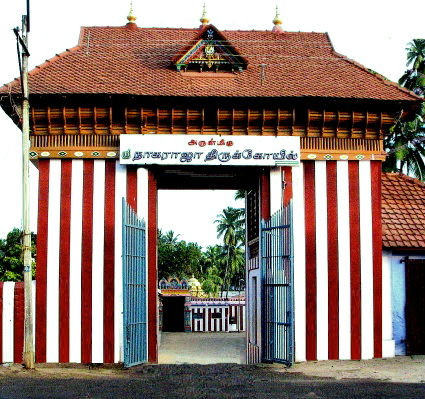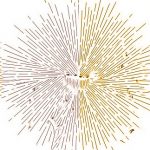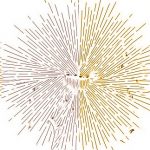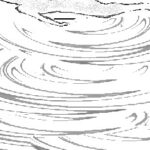Serpents worship (Naga Worship) has been in vague since pre historic and puranic times in many parts of world and therefore worship of serpents as God is not new phenomenon in India. Worship of Serpents had existed even in Egypt, Mesopotamia, Greece, Korea, Japan, China and many of the African countries besides Rome etc even during ancient times. Serpents have been worshipped as deity by Hindus, Buddhist and Jains and few temples giving importance for snakes exist in some parts of our land.
Snakes are the only creature whose body is not affected by any object even though they move around on sand and dust though they live in sand pits even if the pits are wet. This is the gift of nature. In a way their body remains unaffected from surrounding objects under any circumstances. This is why the Puranas cite the example of snakes whose body remains detached from the surrounding objects, to preach the sadhanatviks that like snakes one should remain free of attachments and influences in life if they want to remain independent in thought and mind to attain wisdom.
As per puranic tales the Serpents were given birth by twelve wives of Saint Kashyaba who was son of greatest Sage on earth Maharishi Marichi and attained divinity. While all serpents are not considered to be divine, however some of them were divine to name a few Raghu and Kethu who are revered as two important deities in the fleet of nine Navagrahas. In puranic times followed by worship of divine Cow, the Serpents were also worshipped especially for expiation of sins (Dosha) borne out of various acts committed besides to beget children and cured of skin diseases.
In the clan of Serpents the Ashta Naga, a group of eight serpents were considered important in divine world. They were:- Thousand headed Adi Shesha or Ananta Nag, Padma, Mahapadma five headed green serpent, Kuligan with the symbol of Moon on her head, Vasuki the King of Serpents, Shankapala, Thakshak and Gharkoda. King of Serpents Vasuki is believed to reside in Pathaal under the basin of now extinct River Saraswathi while in a huge lake called Dundak in Nepal, Serpent Gharkoda live in the midst of several crores of diamonds and other ornaments and therefore she is worshipped in Nepal as divine Serpent. The other important serpents worshipped are, Asthika with half human body and blue in colour, Shangalpala, Jwalamukhi, Kalian who reportedly lives in Yamuna river, Gadak and Vasuki’s sister Manasa etc. The entire entrances to the Nag Log are reportedly studded with several rare gems, diamonds, gold and other jewels. Puranas states that the Naga Log is filled with countless rare gems, pearls, diamonds etc. Such ennobled snakes have few temple in India, especially one in Kerala and the other in Kanyakumari in Tamilnadu. However amongst the two the oldest and highly revered temple is the Nagaraja Temple in Kanyakumari.
Neither the origin, nor the history or other details of this ancient temple Nagaraja is known. However the story of this temple is based on two puranic folklores told through word of mouth for decades. It is stated that during 16th century most of the land in this region were filled with full of bushes and forest trees. Due to adverse poverty and unpleasant upper and lower caste divisions, the locals had to go to nearby forest jungles to fetch wood for selling and cooking, while others worked as labourers in the Paddy fields owned by rich landlords. There used to be lots of snakes moving around the jungles as well as paddy fields, they being jungle terrain. Therefore the poor began treating the Serpents as guardian deities of forest lands and farms and prayed to them not to harm them while working in fields and forests. Some open spaces were also created and stones with images of snakes were placed there and worshipped before going to the fields and jungles. Thus emerged worship places for serpents in scattered manner. What is the puranic lores on Temple Nagaraja ?
The first folklore mentions that in the place where the temple exists, one day a female laborer was clearing the bushes and thrones and was shocked to find blood struck in the sickle while cutting the plants in a bush. Terrified lady hurriedly cleared the bush and found the dead body of a five headed serpent lying in pool of blood. She ran into the Village and brought people to show them the scene and the villagers. They feared that it spelt bad omen to the Village and began discussing further course of action when one of the villagers got divine energized (trance) and revealed that he was Vasuki and the serpent killed was her aspect and therefore to atone the sin they have to construct a small temple and worship her there. After consulting elderly people in the Village, the Villagers erected a small thatched hut with Palmyra leaves roof as ordered by the Serpent deity and began worshiping the Serpent God as Nagaraja in the same place where the snake was killed. Thus emerged the temple for the chief of Serpents in the place where the present temple stands. The small thatched hut was converted into a big temple sometime in later centuries by the King who was ruling that region then.
As per another mythological lore, a laborer who was cutting grass in this area tried to sharpen his sickle on a rocky stone slab. He was surprised to find blood oozing from the stone and ran into the village and brought the Villagers. They brought a Nambudiri Brahmin, an astrologer who was accidentally travelling by that side for advice. The Nambudiri Brahmin carefully studied all aspects and predicted through Prasannam, an astrological reading, that the stone was divine energized with that of God of Serpents Vasuki, and the Serpent King desired to have a temple constructed for him in the same place. When it reached the ears of the King , he verified the facts from the Nambudiri Brahmin and decided to construct a temple for the divine energized stone as advised by the Brahmin. He established the present temple for the worship of Serpents in the same place where the divine energized stone was found. The temple was named Temple of Nargaraja, meaning temple for the King Serpent or King of Snakes.
Generally one may find importance and prominence given to the Serpents only in the temples of female deities belonging to Mariamman or shortly called Amman temples, but contrary to them, in Nagaraja temple the Serpents have been given more prominence than other deities as the Lord of Serpents (Nagaraja) reportedly manifested on its own in a Paddy field as an aspect of Lord Krishna. Lord Krishna revealed through Bhagavath Gita (10.28) that ‘amongst Nag I am Vasuki’. The snake around the neck of Lord Siva is Vasuki. While the entire temple has been built in concrete structure, only the roof over the sanctum sanctum of Nagaraja is thatched with Palmyra leaves which is also replaced every year with newer one. the reason for it is not known. Every year when the roof is changed a big serpent visits the sanctum sanctum without fail and it hurts none and vanishes of its own after remaining there for some time. It is a miracle that happens even to this day say the villagers.
The presiding Serpent God Nagaraja graces from the sanctum sanctum with five heads. The entrance of the sanctum has two Serpent deities namely Darnendran, a male and Padmavathi, female. They are considered to be the Dwarakapalakas for the sanctum. The presiding deity Nagaraja in the sanctum is enshrined on a wet sand surface instead of on cemented floor. Since the deity was found in the midst of wet sand in the paddy field, the wet sand scooped out from the ground around the deity is given as Prasad to the devotees instead of vermillion or ash as given in other temples. Even after scooping out the sand to distribute to devotees as Prasad, no crater is formed there and the place is always found to have same level of sand which is another miracle noticed here. The temple has innumerable statues of serpents. It is stated that the temple tree is Oda Valli which has medicinal qualities to cure dreaded disease leprosy.
One can also see the engraved images of Lord Muruga, Lord Krishna, Lord Padmanabaswami (Lord Vishnu) besides Goddess Parvathi on the pillars in this temple. The principle deity is called Nagarajaswami and his consort as Goddess Nagaramman. Two separate sanctum for Lords Ananthakrishna (Lord Krishna) and Kasi Vishwanatha (Lord Siva) are found here. After performing puja to the presiding deity Nagaraja, pujas are also performed to these two deities in their sanctum. However, as a custom the last puja of the day (called Arthajama puja) is performed to Lord Krishna because he is manifesting in the temple as Vasuki. Goddess Durga is also considered to be important deity in this temple.
Unlike in other temples, another interesting feature which can be seen here is the flag post of the temple which is dedicated to Lord Krishna only. Traditionally in all the temples a Garuda will be found on the Flag post but deviating from the tradition, a tortoise has been installed in the Flag post of this temple. Since Purana says that both Garuda and Snakes are enemies, this being a temple for Snakes, instead of Garuda, the tortoise has been enshrined in this shrine. The legend says that since Lord Vishnu sent as his aspect a Tortoise on which the the churning stick was placed, tied with Vasuki as rope while churning the ocean for collecting nectar. Since both the Tortoise and Vasuki jointly engaged themselves in the divine act to get nectar, as a mark of honour Tortoise has been given prominence and placed in the Flag post of this Vasuki temple called Nagaraja Temple.
During 15th century it is claimed that one of the rulers of this area namely Sree Veera Udaya Marthanda Verma who was suffering from acute Leprosy got cured of it miraculously on the same day after he visited the temple. It was Sunday when he visited the temple to worship God Nagaraja seeking relief from the ailment. From then on it became custom for the devotees to visit this temple on Sundays to get cured of their diseases. It is claimed that the main priests of this temple is always from one of the Nambudiri families of Kerala whose family worshiped Nagaraja for generations.
Nagaraja Temple of Kanyakumari is visited by pilgrims mostly between August and September to offer prayer to the Serpent God to get cured of their skin diseases and expiation of sins accrued on account of several events. They offer milk to the presiding deity in fulfilment of the prayer.
It is also claimed by some that the Nagaraja Temple was earlier a Jain temple which is evident from the images and inscriptions of Jain Tirthankaras, Mahavira and Parswanatha found on the pillars of the temple. The entrance to the Nagaraja Temple is constructed on the model of Buddha Vihara. Though documentary proofs or other evidences are available to authenticate the claims, the scholars opine that the inscriptions and images in temple make one believe that it could belong to 10th century.
Whatever is said and done what becomes clear from this temple is that the Serpents have been worshipped as an important deity for generations even from the period of puranic times. Several varieties of snakes have been reportedly seen visiting this temple, but interestingly there has been not even one case of someone died of snake bite in this temple or surrounding this area.
The extent of importance given the Serpents can be gauged by the fact that Serpents form part of the objects portrayed by several Gods and Goddesses. Lord Siva has Vasuki around his neck, Lord Vishnu’s bed in Milk Ocean is a Serpent, The umbrella above the head of Lord Krishna is a Serpent and several female deities called Ammans have Serpents over their head to give shade and protection from rain and sun rays. Most importantly Serpents Raghu and Kethu are important amongst the nine planet deities called Navagrahas and are possessed with divine powers to remove the adverse effects of certain planets. In order to get protection from serpents during harvest season, the farmers perform Naga panchami festival to appease the Snake Gods so that the serpents stay away from biting those working in the Paddy fields. In Lord Siva’s temples while performing Abishekam the Milk is poured over the Serpent giving shade over the head. Thus Lord Siva is said to ensure that the Serpent on his body is also respected. Snake statues in the temples are offered milk and incense stick to gain knowledge, wealth, and fame.
There is a general belief that when Serpent God Ananda is worshipped to beget male child, Serpent God Vasuki to beget female child, Serpent God Daksha to gain physical strength, Serpent God Padma to beget good character, Serpent God Shangalpala to cure skin diseases, Serpent God Akalakesha to wipe out sins of previous birth, Serpent God Kuligan to cure cold related diseases and Serpent God Mahapadma to attain Moksha after death. The address of the temple is :-
-Address-
Nagaraja Temple, Nagercoil,
Kanyakumari District , Tamilnadu,
Pin :629 702.
Phone : 04652 – 241270, 232420
E-mail : suchindrum@tnhrce.org







